|
Physiology
With the same pointed ears and converging eyebrows, Romulans bear a very striking resemblance to the Vulcans. For good reason: they are the descendants of a split from Vulcan society two millennia ago. So it is assumably true that their physiology is nearly identical to the Vulcans, except in smaller aspects that are the result of evolutionary adaptation to Romulus conditions. The ears are less pointed than their Vulcan counterparts, and their features less severe. Though identical in almost every way to their cousins, the Romulans lack the rigorous mental disciplines developed by the followers of Surak. This and the more benign environmental conditions on Romulus has gradually worn away the physical capabilities of Romulans in comparison to their ancestors. 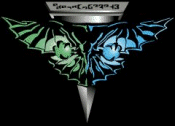
Society In Romulan society, military rank influences social standing. Because Romulans are a militant civilization who consider defending the Empire and their own personal honor of foremost importance, military service and accompanying rank are decisive factors in determining social eminence. It is a society with a clearly defined caste system. Every Romulan is accorded a social standing associated with the power and military rank he commands. The highest ranked Romulan is the "Fvillha", or chief Praetor, the Speaker of the Praetorate. He holds immense power, and those under him rank progressively lower to end with the lowest of the low, prisoners. Prisoners of the Romulan state are scorned as less than Rihannsu, as Romulans identify themselves. Without honor, they rank lower than even slaves. The pillar of the Romulan political organization is the House system. It is a clannish system with hereditary succession to continue the lineage. However, the House is not as narrow in scope as a feudal family, as it encompasses a larger cross-section of society. The servants of a House adopt its name as their own, and though they are not equals to their masters, they are considered part of the House. As with each individual Rihannsu, a House is accorded a social rank and status according to the culminative status of its members and its past service to the Empire. The status of a House can be generalized into two categories, the Greater House and the Lesser House. Both are integral to the social structure of the Romulan Empire. The most important person within a house is the hru'hfirh, or Head of House, and each member of the house is given a station to function in. As adoptions are common in Romulan society, adopted Romulans are accorded the same status and prestige they would have held within their own biological House. However, the adopted may have to bear responsibility to two Houses instead of one. The number of members within a House reflects its social prestige, with more being better. An unique form of revenge in Romulan society is done by kidnapping young children of the rival House and rearing them as their own. Children taken in this way are usually never seen again. 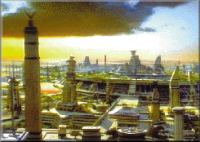
Respect and honor form the basis of Romulan society. A lack of deference to one's rank is to show a lack of "mnhei'sahe", or "the ruling passion", an appreciation of honor, duty, courtesy and strength. With Romulans, a successful negotiation must leave all parties satisfied that they were dealt with honor. Their status, their "face", must be acknowledged during the proceedings and remain intact after the encounter. To deny a Romulan appropriate mnhei'sahe, the offended Romulan may initiate a duel to restore his honor, or if the disgrace is too great, surrounding parties may decide to preserve the memory of his honor and kill him before further damage is done. Mnhei'sahe is not clearly defined in statutes, but it is a long-standing custom of showing deference and honor and guides the lives of all true Romulans. Every Romulan knows by the actions and bearing of another exactly what rank and social status he has. Subtle observed cues, previous reputation, current military rank, and past experience all determine the level of respect accorded to a Romulan. Though honor is as integral a part of their society as Klingons, Romulans are not so physically violent or interested in dying gloriously. They are however, extremely suspicious of all aliens and will believe only one of their own. Their words are kept with the knowledge that failure to do so will mean a fate worse than death : dishonor. The main force in Romulan life is honor, but they also acknowledge the reality of power. The goal of every Romulan is gaining power -- if not for themselves then for their House and the Empire. The loyalty of Romulans for the Empire is unquestionable, and the nationalism of Romulans can always be counted upon in times of conflict. It is their belief that if mnhei'sahe is with the Empire, glory will remain with Romulans. Rihannsu History Romulan history is an extension branching out of Vulcan ancient history. Only 2 millennia old after its split from Vulcan, the Romulans have developed their own ways and identity, separating them from their Vulcan relations. Vulcan a millennia before the Rihannsu migration was warlike and dangerous for the weak. Resources on the dry world were far too sparse for peaceful coexistence of all its people. It was the constant struggle for survival that made early Vulcans violent, emotional, and fiercely clannish. Each of the hundreds of small clans and city-states on the planet surface had diverse governmental structures and religions, and they constantly battled each other over possession of resources and water on the planet. It is estimated that at any one time, 90% of the planet was at war. The wages of war tired some Vulcans, who after endless battle wondered if peace might not be a better way of life. The leader of this movement was Surak, who spread his philosophies of logic and pacifism to the warring Vulcans. Though slow to gain momentum, Surak ultimately succeeded in converting a core of Vulcans to his cause, among them S'Task, one of his finest pupils. Vulcans came into first contact with alien life in Terran years B.C. 20. Vulcans first received messages from outside their planet, and the realization of alien life so stunned the planet that a total cease-fire was declared until they dealt with this matter. The message was decoded through some mathematics and revealed messages overtly friendly and promising. The aliens promised lucrative trade and peaceful contact. In good faith the Vulcan planetary government decided to send emissaries and meet with these aliens. Surak was delayed by mechanical failure in his shuttle, and S'Task was sent instead on the ambassadorial convoy assigned to greet the alien visitors. They turned out to be Etoshan and Duthuliv pirates, interstellar criminals who preyed on cultures without interstellar travel. The pirates captured the good-will ambassadors, killing anyone who resisted. A large portion of the leadership of Vulcan was imprisoned and held for ransom, S'Task among them. Vulcan had enough pride to refuse extortion and soon was plunged into total war with the pirates. This is known as the "Ahkh," the war that united all of Vulcan in facing a common enemy. Though their technology was primitive, the innate psionic abilities of Vulcans helped them overwhelm the aliens, who found themselves attacking each other and piloting their ships into the Vulcan suns. It wasn't long before the Orion pilots made a hasty retreat and left the planet they should never have made designs upon. Even while the war raged on, Surak firmly held to his principle of peace and offered a peaceful resolution with the Orion invaders. S'Task, however, was not willing to let his life be decided by the words of an untrustworthy Alien and led a rebellion on his slave ship, killing hundreds of his captors and releasing the imprisoned Vulcans. At great risk to his life, he then rammed the liberated vessel into the Orion mothership, killing thousands of pirates. He was found many weeks later in an escape pod, drifting in space, half-starved and nearly dead. He returned to Vulcan as hero, but Surak did not appreciate his heroics and chided him for having resorted to violence. After this encounter with the hostile world, S'Task realized the universe was too violent and unpredictable to deal through logic and peace alone, and he could no longer follow his teacher's philosophies. This split between teacher and student deepened into a great fissure in Vulcan society. S'Task believed strength alone could ensure a protected future for Vulcan, but Surak and the vast majority of the society followed the principles of logic. Knowing they were outnumbered, S'Task and some eighty thousand followers left Vulcan to start anew on another world. The differences between S'Task and Surak would never be resolved once the ships left Vulcan. However, S'Task and his followers had no idea it would take them a century of search to locate a new world, or in their case, two homeworlds. They avoided every planet recorded on the Orion ship computers and sought a sanctuary far from untrustworthy aliens. Of the sixteen ships that departed from Vulcan, only five survived to see the Two Worlds, the center of their new civilization. The Two Worlds was a binary planet system orbiting 128 Trianguli. Deemed habitable and distant enough from their original homeworld, it was named ch'Rihan and ch'Havran, meaning "of the Declared" and "of the Travelers," in the language they developed out of the Vulcan dialect. In this new tongue, the travelers called themselves "Rihannsu," or "the Declared." Life was not easy for the new settlers, even in the resource rich Two Worlds. 6,000 Rihannsu died within the first 10 years, ironically at their own hands, since they resumed the old ways of things and feuded over resources once again. Two centuries ago, a starship from Earth, the U.S.S Carrizel, was surveying the 128 Trianguli system when they discovered to their surprise the Two Worlds which had a highly developed society. The dubbed the twin worlds Romulus and Remus after the Terran legend of Roman founders. The vessel broadcasted messages of friendship and peace, but were met with silence. The left after further studies and turned in the report to Starfleet. The arrival of the alien ship greatly shook the Rihannsu. They remembered the Orion pirates who invaded Vulcan millennia ago had introduced themselves in much the same way. Apprehensive to the point of paranoid, they built a massive number of weaponry designed to overwhelm what they perceived as invading forces. It was three years before the Terrans came again to visit the "Romulans" as they called the civilization. The Romulans engaged and destroyed every vessel sent their way unprovoked and before contact was even made. In one incident, the Romulans captured a starship, took it apart and added learned to add warp engines to their vessels. The United Federation of Planets was formed at about this time, and they asked their Vulcan allies if they knew of this volatile race, to which they cautiously replied could possibly be the descendants of S'Task and his followers. Starfleet sent in a larger task force each time the fleet before was obliterated. They could not understand how primitive forces could wreak such havoc, and made overtures to peace. The Romulans accepted a peace settlement only after a humiliating defeat, however, even as the defeated, they refused to meet with any alien ambassador or convoy in person, and negotiated the treaty was through subspace communications. The Neutral Zone was established in this treaty to serve as a buffer between Romulan and Federation space. Entry into the light-year wide band of space would be interpreted as an act of war on either side. 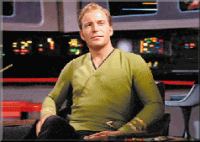
It was six years later, on Stardate 1709.2, that the Romulans would break the treaty and send a lone warship to attack several Federation outposts. Captain Kirk of the U.S.S. Enterprise perceived this challenge of Federation resolve as a small test set forth by the Romulans to gauge the Federation's reaction. It was the first time the Federation witnessed the cloaking device Romulans had developed, which had the powerful advantage of rendering a vessel undetectable to ship sensors or visual sight. However, a cloaked ship cannot attack, and there is always trace residues to pick up. The ship was destroyed in battle, and they discovered the close relation Romulans share with Vulcans. Shortly before Stardate 5027.3 reports reached the Federation that the Romulans and Klingons had signed an alliance. The two sides were equally distrustful of the Federation and allied themselves on this premise. They exchanged technology, the Klingons were allowed use of Romulan cloaking devices, while the Romulans gained Klingons schematics for the Bird-of-Prey warship. In 2292, the Klingons faced an internal crisis following the explosion of their moon, Praxis. Chancellor Gorkon initiated peace talks, and Klingon subsequently allied themselves with former enemies. None of the proceedings pleased anyone on Romulus or Remus, and the pact was dissolved. In 2311, thousands of Federation lives were lost to the Romulans in the Tomed incident. Soon after, the two sides signed the Treaty of Algeron was - reconfirming the Neutral Zone, and explicitly forbidding the Federation of developing or using cloaking technology. In the fifty years following the treaty, there was no further incidence between the Federation and the Romulans. However, there has been attempts to destroy or at least go to war against the Federation. The Enterprise-D, under command of Captain Jean-Luc Picard, once intercepted a Romulan scout ship fleeing from a Romulan warbird. After the scout ship entered Federation space, the Enterprise covered it with its own shields and rescued the ship. They learned from a Romulan aboard, Admiral Jarok, that the Romulans were provoking war by building a settlement right on the Neutral Zone. Jarok requested Picard to assist him in seeking out and destroying the outpost before full-scale war erupts. The captain agreed to go, but not before making cautionary preparations. When they arrived, there was nothing but a cloaked satellite and two warbirds waiting at the wings. Admiral Jarok only realized then that he had been the bait to lure the Enterprise into a Romulan trap, but Picard had enough wile to prepare for treachery and 4 Klingon Birds-of-Prey decloaked at his signal. The Romulans decided to retreat, and Jarok took his own life in shame. 
Having been deterred in the attempt to destroy the Federation, the Romulans switched to a different tactic, splitting the Klingon/Federation alliance. On Stardate 44885.5, Romulan operatives kidnapped Enterprise Chief Engineer Geordi LaForge and brainwashed him. Geordi was programmed to assassinate Vosh, Klingon Governor of the Kriosian colonies, and returned to the Enterprise. Had he succeeded, he would have proclaimed his support of the Kriosian rebels, an action which would have severely damaged bilateral relations. Then it was revealed a Klingon Emissary on-board the Enterprise was working with the Romulans and responsible for sending instructions directly to Geordi's brain. The plot being exposed, the Romulans once again returned empty-handed. The beginning of the civil war on Qo'noS gave the Romulans an opportunity to interfere with Klingon internal affairs to their advantage. Gowron, leader of the Empire, was challenged by the Duras House, with whom the Romulan commander Sela aided in exchange for influence within the Klingon Empire. The Federation couldn't directly intervene in the war, but it was apparent that the Duras house would annul the Khitomer Accords if they claim victory and perhaps even sign a new Klingon/Romulan alliance. Captain Picard and others long suspected Romulan involvement with the war efforts and he proposed a stop to Romulan intervention by blockading the Romulan/Klingon border. 23 ships, along with the Enterprise, set up a vast tachyron network spanning ship to ship. Any Romulan Warbirds attempting to enter Klingon space would be detected, even while cloaked. Picard then advised Gowron to strike the Duras forces hard, goading them to turn to the Romulans for reinforcements. The Duras sisters did indeed ask the Romulans for convoys and the Federation met up with Commander Sela, who attempted to pass the blockade by flooding the network with tachyron particles, but was detected entering Klingon space in the end. Revelation of Romulan aid to the Duras family quickly stripped away any remaining support for the Duras claim to the Klingon Empire, and the war ended with Gowron as Chancellor. 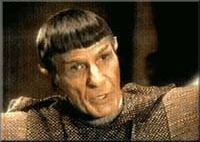
Ambassador Spock was reported to be on Romulus some time before Stardate 45233.1. Starfleet assigned Picard to investigate this intelligence report and confirm if Spock had defected to the Romulan Empire. Picard and Data, disguised as Romulans, met with Spock, who informed them of his efforts to held the underground movement reunify the Romulans and Vulcans. Romulan commander Sela and the military however, perceived this as an excellent opportunity to conquer Vulcan. With words offering peace and unification, a large Romulan force headed for Vulcan. When the true intents of the Romulan fleet were revealed, the Romulan fleet was destroyed rather than allowed capture by the Federation. Ambassador Spock remains on Romulus, working towards his dream of one day reunifying Vulcans with Romulans. First contact with the Jem'Hadar alerted Starfleet of the great Dominion threat coming from the Gamma Quadrant. Soon after Stardate 47987.5, a Galaxy Class starship in the Quadrant was summarily destroyed within minutes of engaging the Jem'Hadar. Knowing they must use better equipped warships to defend the Alpha Quadrant, the Federation licensed Romulan cloaking technology for use on the U.S.S. Defiant, a Federation prototype vessel designed originally for protection against the Borg. The Federation circumvented the limitations set by the Algeron Treaty because a warship was not included within the provisions. There were many restrictions and terms applied to the usage of the cloaking device: it could only be deployed in the Gamma Quadrant and all information Starfleet had about the Dominion would be shared with the Romulans. The the information however, made some Romulans, especially those within the Tal Shiar, Romulan's intelligence agency, apprehensive of the looming Dominion threat. 
Paranoia succeeded worry and the Romulans launched an offensive to close off the Bajoran wormhole and separate the Dominion by a good hundred years of space travel. Their plans included the obliteration of Deep Space 9, but the attempt was foiled but the Romulans did not intend to quit just yet. The Tal Shiar worked covertly with the Obsidian Order, their counterparts in Cardassia, to plan a preemptive strike on the Founder homeworld, whose location they learned from the Federation reports. Both agencies worked without the knowledge of their government, and they built a fleet in the Orias system, whose activity was uncovered by the Maquis on Stardate 48467.3. When the Tal Shiar and the Obsidian Order moved to strike, they found themselves surrounded by hundreds of Jem'Hadar warships. Vastly outnumbered and caught off-guard, the Cardassian/Romulan joint forces was completely obliterated -- all the warships carrying the finest of either agency, destroyed. It wasn't until the very end that General Lovok, the leading Tal Shiar officer was in fact a Changeling. He along with other Founders infiltrated the Alpha Quadrant to weaken and destroy resistance to a Dominion takeover. They had encouraged the Tal Shiar and Obsidian Order to attack the Dominion, and led them straight on into the fatal trap. As Tain observed before his own ship was blown open, "These Founders, they're very good." The Obsidian Order and the Tal Shiar ceased existence after this disastrous campaign. 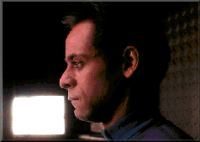
Fear of the Founders created panic in the Alpha Quadrant, and the Klingons acted launching attacks on Cardassia as well as several Romulan outposts. When it was clear a Jem'Hadar full-scale invasion of the Alpha Quadrant via the wormhole was apparent, the Romulan Senate was worried enough to send a fleet of warbirds to Deep Space Nine and join the defensive front of Klingon and Federation ships. The fleet left when the Changeling posing as Doctor Bashir was exposed and his plot to make the Bajoran sun go nova terminated. The Romulans retreated into isolation once again, perhaps still flinching from the Tal Shiar disaster, signing a non-aggression pact with the Dominion, in hopes of recovering while the other Alpha Quadrant powers stalled for time. Romulan Senator Vreenak, the secretary of the War Plans Council and Vice Chairman of the Tal Shiar, signed the pact, and the Romulan Star Empire seemed quite content to sit back and observe for the time being. While carnage and full-scale war between Klingon/Federation forces and the Dominion was raging very close to their Empire, Romulans concentrated on their efforts to rebuild the Tal Shiar. The new version of the Tal Shiar were quickly operative, as shown by their attempt to steal the U.S.S. Prometheus, an experimental Starfleet ship, around Stardate 51501.4. The Tal Shiar were roundly defeated in the end by Starfleet and two emergency medical holograms. The war front changed dramatically when the Empire learned of the assassination of Romulan Senator Vreenak, the one who signed the non-aggression pact. Investigations blamed the Cardassians, who were then part of the Dominion, for the murder. Romulan response was swift, they dispatched a fleet to the Cardassian/Dominion border and 15 outposts were destroyed in one pummeling attack. The Romulans, Federation, and Klingons all had long histories of hostile relations. But joined in battle against a formidable enemy, they are forced to cooperate and save the Quadrant. Will the Romulans finally learn to collaborate with outsiders? Their survival may well depend on it. |
| Rang / Beruf | Charakter | Schauspieler | Episode / Film |
Operative Admiral Colonel Senator |
Sela Alidar Jarok Lovok Cretak |
Denise Crosby James Sloyan Leland Orser Megan Cole |
"The Mind's Eye" (TNG) "The Defector" (TNG) "The Die is Cast" (DS9) "Image in the Sand" (DS9) |
Mit freundlicher Genehmigung von medical log: supplemental